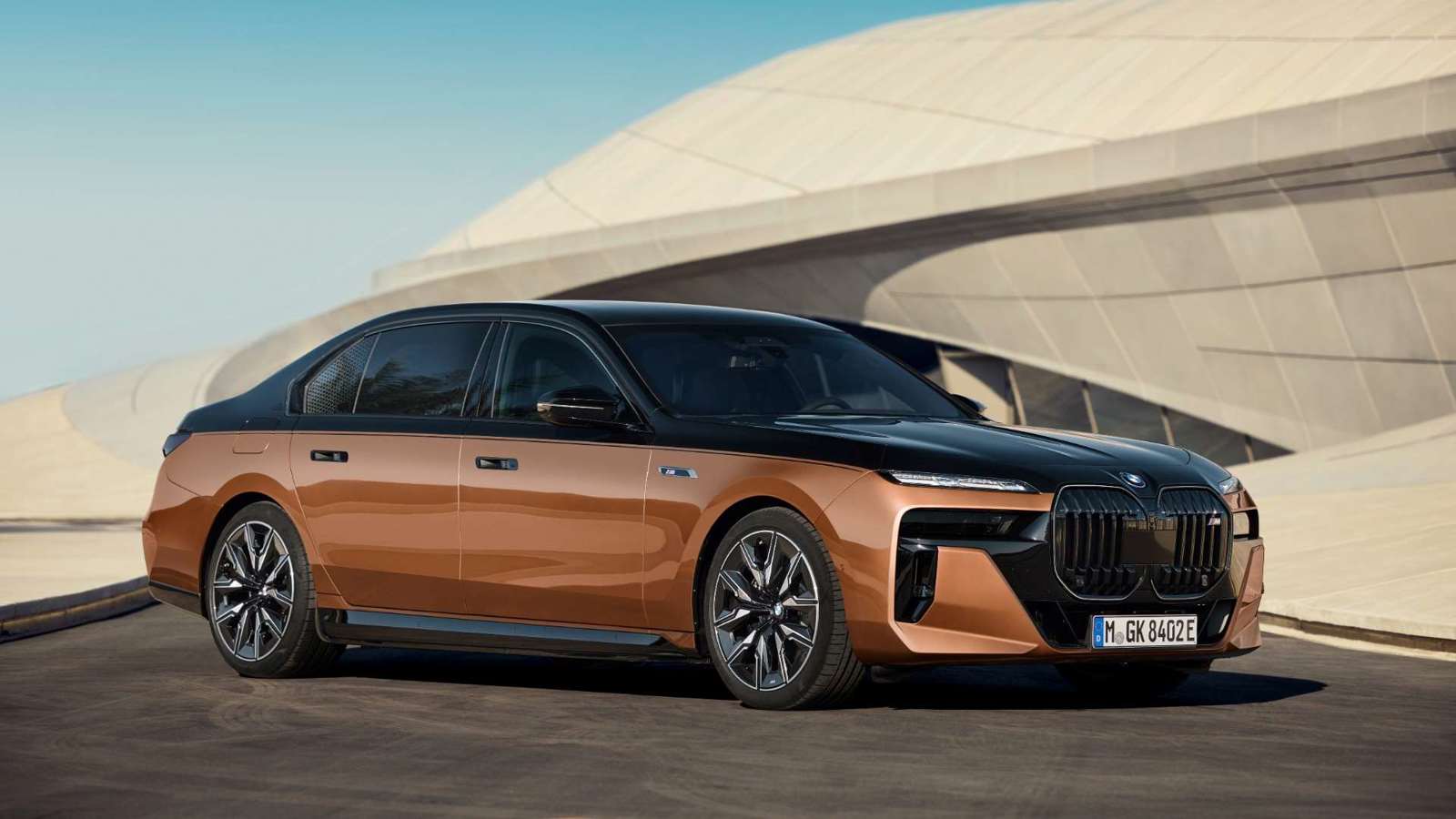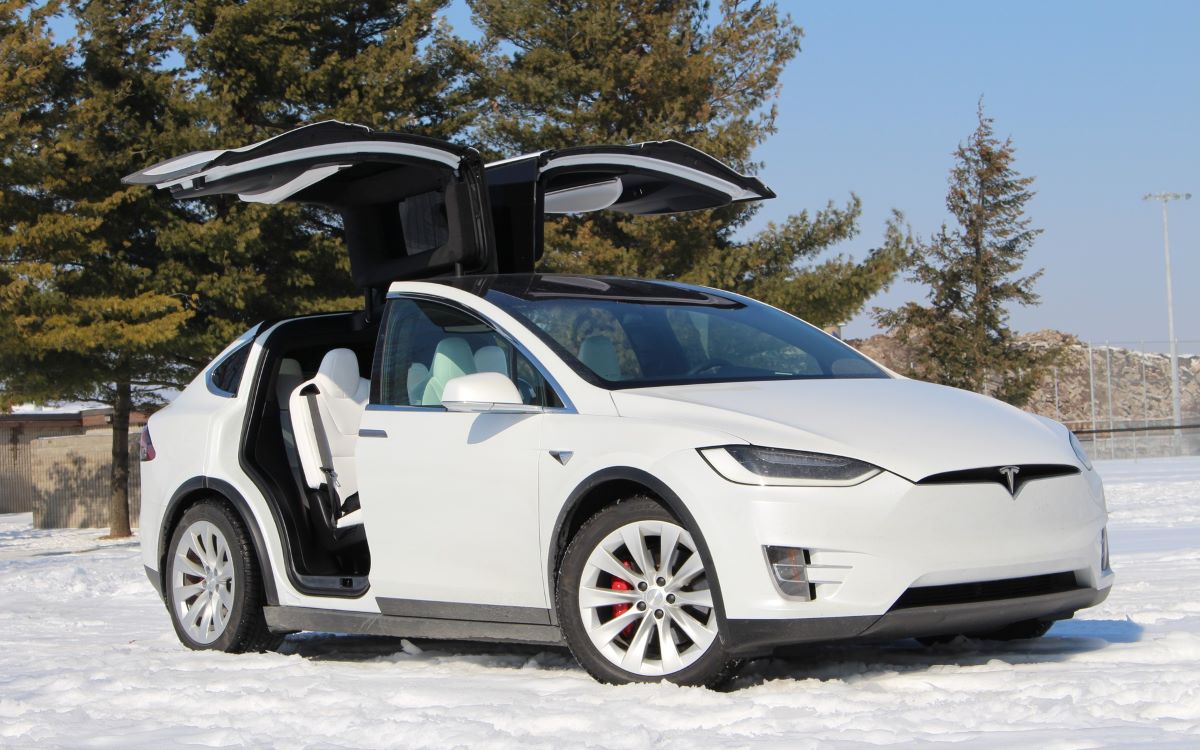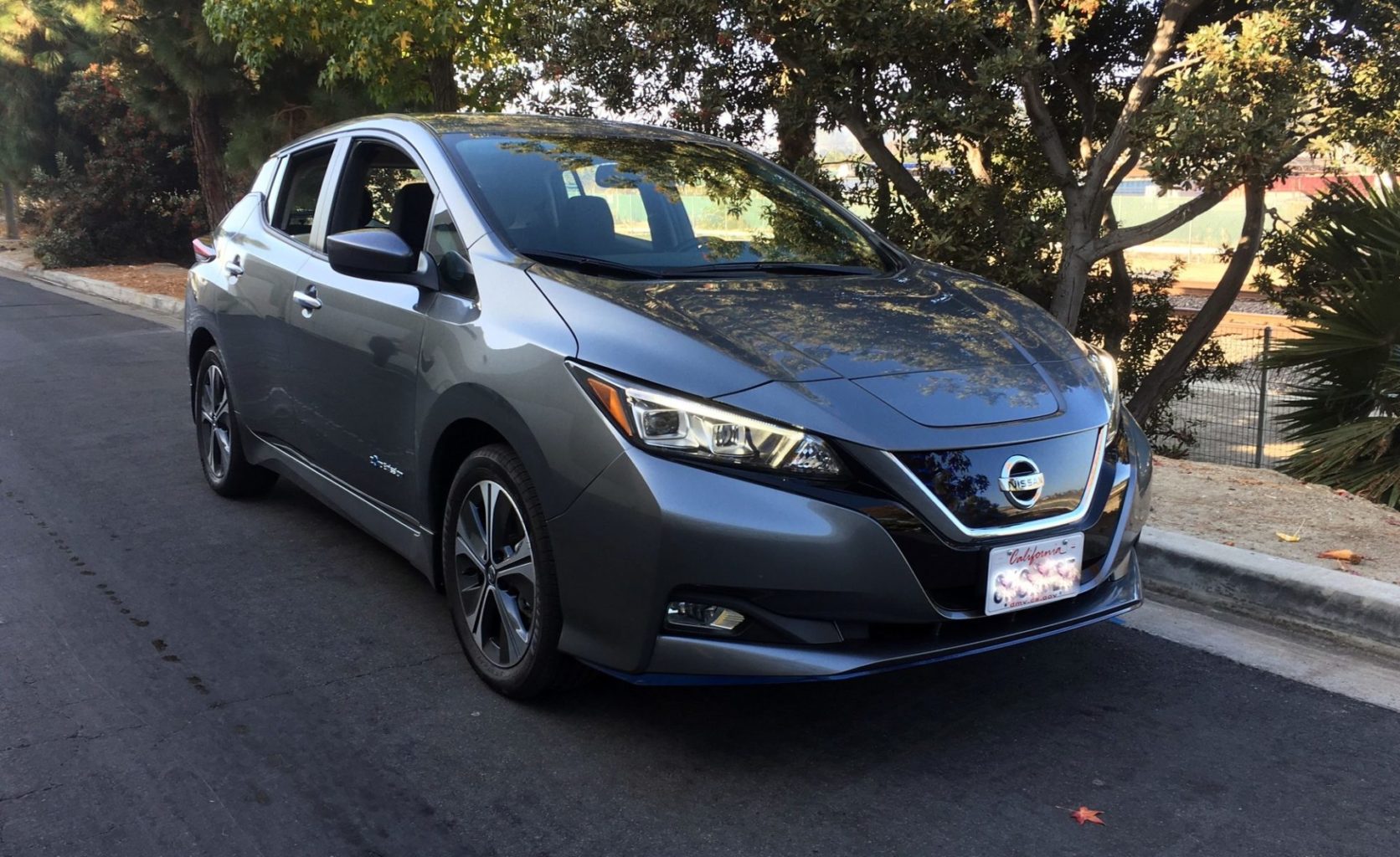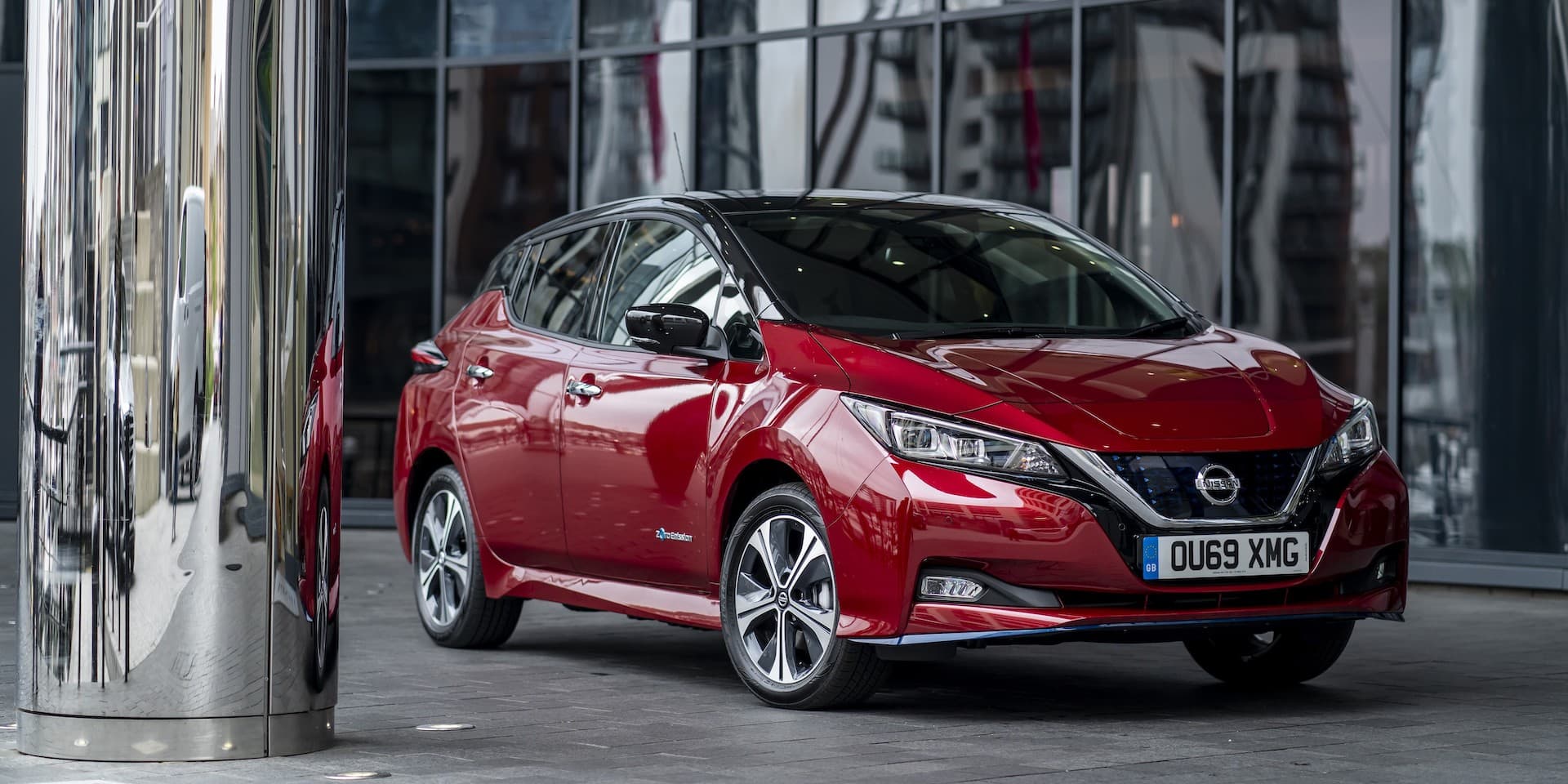The automotive industry has undergone a digital revolution, transforming vehicles from mechanical marvels into sophisticated computers on wheels.
Modern cars now feature complex digital lock systems, keyless entry mechanisms, and advanced security protocols that promise convenience and enhanced protection. However, this technological advancement has created a double-edged sword in the realm of automotive security.
Recent cybersecurity reports indicate that automotive hacking incidents have tripled in 2024, with telematics and application servers being involved in 66% of all security incidents.
The evolution from traditional mechanical keys to digital access systems has introduced both unprecedented security capabilities and new vulnerabilities that criminals can exploit.
The stakes have never been higher. Our ‘computers on wheels’ are more connected than ever, but the features that enhance our convenience often come with privacy risks in tow.
Car manufacturers are engaged in an ongoing arms race against cybercriminals who continuously develop new methods to bypass security systems.
From sophisticated relay attacks to simple signal jamming techniques, the methods used to compromise vehicle security have become increasingly diverse and accessible.
Understanding which vehicles offer robust protection against digital attacks and which ones remain vulnerable is crucial for consumers making informed purchasing decisions.
The disparity between brands is significant some manufacturers invest heavily in military-grade encryption and multi-layered security protocols, while others rely on outdated systems that can be compromised with readily available tools.
This comprehensive analysis examines ten vehicles across the security spectrum, revealing both the champions of digital protection and those that fall short of modern security standards.
The insights provided here are based on current cybersecurity research, documented vulnerabilities, and expert analysis of automotive digital lock systems.
5 Cars With Digital Locks Hackers Can’t Bypass
These technologically advanced vehicles feature state-of-the-art digital lock systems with military-grade encryption that creates virtually impenetrable security barriers against even the most sophisticated hacking attempts.
Their comprehensive security architecture includes multiple layers of authentication, including biometric verification, rolling code encryption, and ultra-wideband technology that makes signal interception nearly impossible.
Even if you lose your phone, a would-be thief would need to bypass its password or biometric security measures, making unauthorized access extremely difficult.
The implementation of advanced cryptographic protocols ensures that each communication between the digital key and vehicle uses unique, time-sensitive codes that cannot be replicated or replayed by criminals.
Concerning PKE implementations, it’s important to make sure challenges are not predictable by using a high entropy seed for randomization and applying CSPRNG to generate encrypted challenges, and these vehicles incorporate such sophisticated measures.
Their security systems continuously update encryption keys through over-the-air updates, ensuring protection against newly discovered vulnerabilities and maintaining the highest security standards throughout the vehicle’s operational life.
1. BMW 7 Series (2023-2025) – Fort Knox on Wheels
The BMW 7 Series stands as the pinnacle of automotive digital security, incorporating multiple layers of protection that make it virtually impenetrable to conventional hacking attempts.
BMW’s approach to security mirrors that of military-grade systems, implementing what the company calls “Defense in Depth,” a comprehensive strategy that ensures even if one security layer is compromised, multiple backup systems remain intact.
At the heart of the 7 Series’ security lies BMW’s proprietary CryptEngine, a hardware-based encryption system that generates unique cryptographic keys for every interaction between the key fob and vehicle.
Unlike traditional systems that rely on static codes, the CryptEngine creates rolling codes that change millions of times per second, making replay attacks virtually impossible. The system employs AES-256 encryption, the same standard used by government agencies for classified information.
The vehicle’s Ultra-Wideband (UWB) technology represents a quantum leap in keyless entry security. UWB measures the precise time-of-flight of radio signals, creating a three-dimensional security bubble around the vehicle.
This technology can detect the exact distance of the key fob with centimeter-level accuracy, effectively neutralizing relay attacks that have plagued other keyless systems. The UWB system operates on multiple frequencies simultaneously, making it resistant to jamming attempts.

BMW’s Digital Key Plus technology adds another layer of sophistication. The system uses Near Field Communication (NFC) combined with Bluetooth Low Energy (BLE) to create a secure communication channel between the owner’s smartphone and vehicle.
The authentication process involves multiple cryptographic handshakes, biometric verification, and real-time threat assessment. Even if criminals manage to intercept communications, the encrypted data packets are virtually unbreakable without access to BMW’s proprietary decryption algorithms.
The 7 Series also features an advanced Intrusion Detection System (IDS) that continuously monitors all electronic communications within the vehicle.
Any unauthorized attempt to access the vehicle’s network triggers immediate countermeasures, including the activation of additional security protocols and real-time alerts to the owner’s mobile device.
The system can differentiate between legitimate diagnostic procedures and malicious intrusion attempts, ensuring that routine maintenance doesn’t trigger false alarms. Physical security measures complement the digital protections.
The vehicle’s antenna system is shielded against electromagnetic interference, and the key fob incorporates motion sensors that put the device into ultra-low-power mode when stationary, preventing criminals from amplifying weak signals. The integration of these multiple security layers creates a formidable barrier that has remained unbreached in independent security testing.
2. Mercedes-Benz S-Class (2024-2025) – Impenetrable Luxury
Mercedes-Benz has transformed the S-Class into a digital fortress, implementing security measures that rival those found in diplomatic vehicles. The company’s GUARD division, which specializes in armored vehicles for heads of state, has influenced the civilian S-Class security architecture, resulting in protection levels that exceed industry standards.
The S-Class employs Mercedes’ proprietary KEYLESS-GO Advanced system, which utilizes quantum-resistant encryption algorithms designed to withstand attacks from future quantum computers.
This forward-thinking approach ensures that the vehicle’s security will remain robust even as computing technology advances. The system generates cryptographic keys using true random number generators based on quantum fluctuations, making the keys mathematically unpredictable.
Central to the S-Class security is the Vehicle Security Module (VSM), a dedicated hardware security module that operates independently of the main vehicle computer systems.
The VSM creates an isolated environment for all security operations, ensuring that even if other vehicle systems are compromised, the core security functions remain intact.
This separation of critical security functions from general vehicle operations represents a fundamental shift in automotive cybersecurity design. The vehicle’s biometric authentication system adds a personal dimension to security.
The S-Class can recognize authorized users through fingerprint scanning, facial recognition, and voice pattern analysis. These biometric markers are stored locally within the VSM using irreversible hashing algorithms, ensuring that even if the data is somehow extracted, it cannot be used to recreate the original biometric information.

Mercedes has implemented a revolutionary concept called “Predictive Security,” which uses artificial intelligence to analyze patterns in the vehicle’s environment and predict potential security threats.
The system continuously monitors radio frequency environments, detecting anomalous signals that might indicate the presence of hacking equipment.
When threats are detected, the vehicle automatically adjusts its security posture, implementing additional protective measures without user intervention.
The S-Class also features encrypted vehicle-to-infrastructure (V2I) communications that create secure channels for interactions with smart city systems, parking facilities, and charging stations.
These communications use certificate-based authentication and perfect forward secrecy, ensuring that even if communication keys are compromised, past and future communications remain secure. The integration of blockchain technology for certain security functions represents Mercedes’ commitment to cutting-edge protection.
The vehicle maintains an immutable record of all access attempts and security events, creating an audit trail that can be used for forensic analysis if needed. This blockchain implementation is private and distributed across multiple secure nodes, making it impossible for attackers to alter the security logs.
3. Lexus LS (2024-2025) – Japanese Precision Security
Toyota’s luxury division has engineered the Lexus LS with security systems that reflect Japanese principles of precision and reliability. The vehicle incorporates Toyota’s decades of experience in manufacturing industrial control systems, bringing enterprise-level security concepts to the automotive world.
The LS features Toyota’s proprietary Smart Key System Plus, which employs a unique dual-authentication protocol. Every access attempt requires verification from two independent security systems operating on different frequencies and using different encryption algorithms.
This redundancy ensures that compromising one system doesn’t grant access to the vehicle, as both systems must simultaneously validate the access request.
Lexus has implemented what they call “Security-by-Design,” a philosophy where every electronic component in the vehicle is designed with security as a primary consideration rather than an afterthought.
The approach involves multiple security perimeters, starting with the key fob itself, which contains a tamper-resistant secure element that physically destroys encryption keys if tampering is detected.
The LS utilizes advanced frequency-hopping spread spectrum (FHSS) technology for all wireless communications. The system rapidly switches between hundreds of different frequency channels in a pseudorandom pattern known only to the vehicle and authorized key fobs.
This technique, borrowed from military communications, makes it virtually impossible for attackers to intercept or jam the signals effectively.

The vehicle’s security architecture includes multiple independent processors dedicated solely to security functions. These processors operate in a master-slave configuration with continuous cross-verification, ensuring that any tampering with one processor is immediately detected by the others.
The processors use different operating systems and encryption libraries, making it impossible for attackers to compromise the entire security system with a single exploit.
Lexus has incorporated environmental awareness into the LS security system. The vehicle can detect changes in its physical environment that might indicate attempted theft or tampering
Accelerometers, gyroscopes, and pressure sensors work together to create a comprehensive picture of the vehicle’s status. Any unauthorized movement or vibration triggers additional security measures and owner notifications.
The LS also features advanced electromagnetic shielding that protects against both passive eavesdropping and active electromagnetic interference attacks.
The shielding is designed to meet military specifications for electromagnetic compatibility, ensuring that sensitive security communications cannot be intercepted or disrupted by external electromagnetic sources.
The integration of machine learning algorithms allows the LS security system to adapt to new threats automatically. The system continuously analyzes attack patterns and updates its defensive strategies without requiring manual updates. This self-improving capability ensures that the vehicle’s security evolves to counter emerging threats in real-time.
4. Audi A8 (2024-2025) – German Engineering Excellence
Audi has transformed the A8 into a showcase of German precision engineering applied to automotive cybersecurity. The vehicle represents the culmination of Volkswagen Group’s security research and development efforts, incorporating technologies developed for the group’s various brands and adapted specifically for luxury vehicle applications.
The A8’s security foundation rests on Audi’s proprietary Virtual Cockpit Security Architecture (VCSA), a comprehensive system that treats the entire vehicle as a secure computing environment.
Unlike traditional approaches that secure individual components, VCSA creates a holistic security ecosystem where every electronic system is continuously monitored and verified.
Central to the A8’s protection is the implementation of Intel’s Hardware Security Module (HSM) technology, adapted specifically for automotive applications.
The HSM provides a secure execution environment for critical security operations, including key generation, authentication, and encryption. The module is physically isolated from other vehicle systems and includes tamper-detection mechanisms that render it inoperable if physical compromise is attempted.
Audi has pioneered the use of blockchain technology for vehicle identity management. Each A8 has a unique blockchain-based identity that cannot be forged or duplicated.
This identity is used for all security operations and is verified through a global network of Audi security nodes. The blockchain implementation ensures that even if individual security components are compromised, the vehicle’s fundamental identity remains intact.

The A8 employs advanced signal processing techniques to detect and counter relay attacks. The system continuously analyzes the characteristics of received radio signals, looking for anomalies that indicate signal amplification or retransmission.
When suspicious activity is detected, the vehicle automatically switches to alternative authentication methods that cannot be bypassed through signal relay.
The vehicle’s artificial intelligence security system represents a breakthrough in adaptive automotive protection. The AI continuously learns from global threat intelligence feeds provided by Audi’s security operations center, updating the vehicle’s defensive capabilities in real-time.
This connection to a global security network ensures that all A8 vehicles benefit from threat intelligence gathered from the entire fleet. Audi has implemented a unique “Security Glass House” concept in the A8, where all security-critical operations are conducted within a transparent, auditable environment.
Every security decision and action is logged and can be reviewed by authorized personnel. This transparency ensures that the security system operates as designed and helps identify potential vulnerabilities before they can be exploited. The A8 also features advanced physical security measures, including ultrasonic intrusion detection and electromagnetic signature analysis.
These systems can detect unauthorized physical access attempts and distinguish between legitimate activities (such as car washes) and potential theft attempts. The integration of physical and digital security measures creates a comprehensive protection system that addresses all potential attack vectors.
Also Read: 5 Vehicles That Notify Police Automatically and 5 That Stay Silent
5. Genesis G90 (2024-2025) – Korean Innovation Powerhouse
Genesis has emerged as an unexpected leader in automotive cybersecurity, leveraging South Korea’s advanced technology sector to create security systems that rival established luxury manufacturers.
The G90 represents Hyundai Motor Group’s commitment to cybersecurity excellence, incorporating technologies developed in partnership with Korea’s leading cybersecurity companies.
The G90’s security architecture is built around Genesis’ proprietary Quantum Shield Technology, which uses quantum-resistant encryption algorithms to protect against both current and future threats.
The system anticipates the eventual development of quantum computers capable of breaking traditional encryption and implements countermeasures designed to remain effective for decades.
Genesis has implemented a revolutionary multi-factor authentication system that goes beyond traditional key fob verification. The G90 can authenticate users through multiple biometric markers, behavioral patterns, and environmental factors.
The system learns individual user patterns, such as approach angles, walking gait, and smartphone carrying positions, creating a unique behavioral signature that is extremely difficult to replicate.
The vehicle features an advanced threat detection system that monitors the entire electromagnetic spectrum around the vehicle. The system can identify the signatures of common hacking tools and automatically implement countermeasures.
This capability extends beyond traditional automotive threats to include dthe etection of surveillance equipment and other sophisticated attack tools.

Genesis has pioneered the use of 5G security protocols in automotive applications. The G90’s cellular communications use the latest 5G security standards, including perfect forward secrecy and quantum-resistant key exchange protocols.
This advanced cellular security ensures that remote communications with the vehicle cannot be intercepted or manipulated by attackers. The G90 incorporates multiple independent security processors, each running different security algorithms and operating systems.
This diversity approach ensures that a vulnerability in one security system doesn’t compromise the entire security architecture. The processors continuously cross-check each other’s operations, creating a self-healing security system that can detect and isolate compromised components.
Genesis has implemented advanced anomaly detection using machine learning algorithms trained on millions of hours of normal vehicle operation data.
The system can detect subtle deviations from normal patterns that might indicate attempted hacking or unauthorized access. This capability allows the G90 to identify and respond to novel attacks that haven’t been seen before.
The vehicle’s security system includes advanced privacy protection measures that ensure user data remains secure even if other systems are compromised.
Personal information is stored using homomorphic encryption techniques that allow the data to be processed without ever being decrypted, ensuring that user privacy is maintained even during normal system operations.
5 Cars With Weak Encryption and Security Vulnerabilities
These vulnerable vehicles continue utilizing outdated digital lock systems with weak encryption that experienced hackers can easily bypass using readily available tools and techniques.
Their security implementations suffer from predictable authentication protocols, insufficient encryption strength, and vulnerability to common attack methods, including relay attacks and signal amplification.
RKE systems became vulnerable to signal jamming, replay attacks, and interception attacks, and these vehicles still employ such compromised technologies.
The fundamental security weaknesses in these systems stem from poor implementation of cryptographic principles and failure to address known vulnerabilities through software updates.
Relay attack a process of picking up the radio signal from a key fob, potentially inside a home, and relaying it to a device near the car “fooling” the car’s electronics into thinking the owner is performing keyless entry, represents just one of many attack vectors that these vehicles cannot defend against.
Intelligence shows organised crime gangs are using relay technology to receive the signal from a key inside a house and transfer it to a portable device, allowing them to unlock and drive the car, making these vehicles prime targets for sophisticated theft operations.
1. Kia Models (2019-2023) – The TikTok Challenge Vulnerability
Kia’s security shortcomings gained international notoriety through the “Kia Challenge” social media phenomenon, which exposed fundamental flaws in the company’s approach to vehicle security.
According to investigations, many owners of Korean EVs are now employing steering locks to keep thieves at bay, with models from brands such as Toyota, Lexus, and Kia falling victim to the same security issues.
The challenges facing Kia vehicles extend far beyond social media pranks, revealing systemic security weaknesses that affect millions of vehicles worldwide.
The root of Kia’s security problems lies in the company’s decision to use outdated fixed-code systems for keyless entry across many of their models.
Unlike rolling code systems that generate new authentication codes for each use, fixed-code systems transmit the same signal repeatedly, making them vulnerable to simple replay attacks.
Criminals can capture these signals using inexpensive radio frequency scanners available online for less than $100, then replay the captured signal to gain unauthorized access to vehicles.
Kia’s implementation of the Passive Keyless Entry System (PKES) suffers from inadequate signal encryption and poor frequency management. The system operates on easily detectable frequencies without proper signal obfuscation or anti-jamming measures.
Security researchers have demonstrated that Kia vehicles can be unlocked using basic radio equipment that requires no specialized technical knowledge to operate.
The company’s approach to software security updates has been equally problematic. Many Kia models lack over-the-air update capabilities, meaning that security vulnerabilities discovered after manufacturing cannot be easily patched. This limitation leaves vehicles permanently exposed to known security flaws, creating long-term risks for owners.

Even when updates are available, they often require physical visits to dealerships, creating barriers that prevent many owners from securing their vehicles.
Kia’s key fob design incorporates minimal anti-tampering measures, allowing criminals to easily access and modify the internal components. The fobs use standard commercial chips without security-specific modifications, making them vulnerable to both physical and electronic attacks.
The lack of tamper-evident seals or security modules means that compromised key fobs can appear normal while broadcasting credentials to unauthorized receivers. The integration between Kia’s keyless entry system and the vehicle’s main computer networks lacks proper isolation and access controls.
This poor security architecture means that compromising the keyless entry system can provide attackers with access to other vehicle systems, including engine control, navigation, and communications systems.
The cascading vulnerability effect significantly amplifies the security risks beyond simple unauthorized access. Kia’s response to reported security vulnerabilities has been slow and inadequate.
The company has been reluctant to acknowledge security flaws publicly and has often required extensive documentation and media pressure before implementing fixes.
This reactive approach to security creates extended periods of vulnerability for Kia owners and demonstrates a corporate culture that doesn’t prioritize cybersecurity.
The economic impact of Kia’s security failures extends beyond individual vehicle thefts. Insurance companies have begun adjusting coverage and premiums for affected Kia models, recognizing the elevated theft risk.
Some insurers have stopped covering certain Kia models entirely, leaving owners with limited protection options and reduced vehicle values.
2. Hyundai Models (2018-2022) – Sister Company, Similar Problems
Hyundai’s security vulnerabilities mirror those of its corporate sibling Kia, reflecting shared platform architectures and security approaches that prioritize cost reduction over protection.
The company’s vehicles have been targeted by the same criminal techniques that made Kia vehicles notorious, indicating systemic security weaknesses across the Hyundai Motor Group’s non-luxury brands.
Hyundai’s implementation of the Smart Key System suffers from the same fixed-code vulnerabilities that plague Kia vehicles. The system’s reliance on static authentication codes makes it trivial for criminals to capture and replay access signals.
Security testing has revealed that Hyundai’s smart key signals can be intercepted from distances of up to 100 meters using commercially available radio equipment, significantly expanding the range at which attacks can be conducted.
The company’s approach to radio frequency management demonstrates a fundamental misunderstanding of wireless security principles. Hyundai vehicles transmit keyless entry signals without proper frequency hopping or spread spectrum techniques, making them easy targets for signal interception and jamming attacks.
The predictable transmission patterns allow criminals to anticipate and prepare for signal capture opportunities. Hyundai’s mobile connectivity features introduce additional security vulnerabilities through poorly implemented cellular and Wi-Fi communications.
The company’s Blue Link connected car service has been found to use weak encryption protocols that can be broken using standard cryptographic attack tools.
This vulnerability allows attackers to potentially intercept communications between vehicles and Hyundai’s servers, compromising user privacy and potentially enabling remote vehicle control.

The integration of smartphone connectivity in Hyundai vehicles lacks proper authentication and authorization controls. The systems often accept connections from unauthorized devices and fail to properly verify the identity of connected smartphones.
This weakness allows criminals to potentially connect malicious devices to vehicle systems, gaining access to sensitive information and control functions.
Hyundai’s over-the-air update system, where available, suffers from poor security implementation. The update mechanism lacks proper digital signatures and integrity checking, making it possible for attackers to distribute malicious firmware updates that could compromise vehicle security.
The absence of secure boot processes means that even legitimate updates can be intercepted and modified before installation. The company’s diagnostic systems present another significant security vulnerability.
Hyundai vehicles often use standard OBD-II diagnostic protocols without proper access controls, allowing anyone with basic diagnostic equipment to access and potentially modify vehicle settings.
This accessibility extends to critical security parameters, enabling criminals to disable anti-theft systems and other protective measures. Hyundai’s response to cybersecurity threats has been reactive rather than proactive.
The company typically addresses security issues only after they become public or result in significant criminal activity. This approach leaves Hyundai owners vulnerable to known attacks for extended periods and demonstrates a corporate security culture that lacks urgency and comprehension of modern threats.
The cascading effects of Hyundai’s security failures impact not just individual vehicle owners but entire communities. Areas with high concentrations of vulnerable Hyundai vehicles experience increased property crime rates as criminals target these easily accessible vehicles.
The predictable nature of the vulnerabilities allows criminal networks to operate efficiently, knowing that standard attack techniques will succeed across multiple vehicle models and years.
3. Tesla Model 3 (2018-2021) – Innovation Outpacing Security
Tesla’s Model 3 represents a fascinating paradox in automotive security a vehicle that pioneered many advanced connectivity features while simultaneously introducing novel vulnerabilities that traditional automakers avoided.
An automotive security firm has found significant vulnerabilities across three brands with ultra-wideband hardware, with Tesla’s implementation being particularly concerning due to the widespread adoption and high-profile nature of the brand.
Tesla’s approach to vehicle security reflects the company’s software-first mentality, which brings both advantages and significant risks. The Model 3’s extensive use of software-defined vehicle functions means that security vulnerabilities can have far-reaching effects across multiple vehicle systems.
Unlike traditional vehicles, where mechanical systems provide inherent isolation, the Model 3’s integrated approach means that compromising one system can potentially affect everything from door locks to autonomous driving functions.
The Model 3’s key fob system, while more advanced than traditional automotive key fobs, suffers from implementation flaws that make it vulnerable to sophisticated attacks.
Security researchers have demonstrated successful relay attacks against Tesla’s key fobs using equipment that costs less than $1,000. The attacks work by amplifying and relaying the key fob’s signal from inside a building to a device near the vehicle, fooling the car into believing the authorized key is present.
Tesla’s mobile phone key feature introduces unique vulnerabilities related to smartphone security. The system relies on Bluetooth Low Energy (BLE) communications that can be intercepted and manipulated using specialized equipment.
Researchers have demonstrated that Tesla’s phone key implementation can be compromised by devices that mimic authorized smartphones, enabling unauthorized access without the owner’s knowledge.

The Model 3’s extensive data collection and transmission capabilities create privacy and security risks that extend beyond traditional vehicle theft concerns.
The vehicle continuously transmits telemetry data to Tesla’s servers, including location information, driving patterns, and vehicle status data. While this connectivity enables advanced features like over-the-air updates and remote diagnostics, it also creates opportunities for data interception and privacy violations.
Tesla’s Autopilot system introduces security considerations that are unprecedented in the automotive industry. The system’s reliance on external sensors and real-time data processing creates potential attack vectors that could compromise vehicle safety.
Researchers have demonstrated that carefully crafted visual inputs can fool Tesla’s computer vision systems, potentially causing erratic vehicle behavior or navigation errors.
The Model 3’s charging system presents additional security vulnerabilities related to the vehicle’s interaction with external infrastructure. Tesla’s Supercharger network and third-party charging stations create communication channels that could potentially be exploited by attackers.
Poor security implementation at charging stations could allow criminals to access vehicle systems during charging sessions. Tesla’s over-the-air update system, while revolutionary, introduces risks associated with remote code execution and unauthorized system modifications.
The company’s centralized update distribution model means that a compromise of Tesla’s update servers could potentially affect thousands of vehicles simultaneously.
The lack of user control over update timing and content means that owners cannot prevent potentially problematic updates from being installed. The Model 3’s extensive use of touchscreen controls for vehicle functions creates unique security and safety concerns.
Unlike traditional physical controls that have predictable behavior, the touchscreen interface is vulnerable to software glitches and security compromises that could affect critical vehicle functions. The centralization of controls in a single interface means that system failures can have widespread effects on vehicle operation.
4. Nissan Leaf (2018-2022) – Electric Vehicle, Outdated Security
Nissan’s approach to electric vehicle security demonstrates how traditional automotive manufacturers have struggled to adapt established security practices to new technologies.
The Leaf’s security architecture reflects outdated thinking about automotive threats, failing to account for the unique vulnerabilities introduced by electric powertrains and advanced connectivity features.
The Nissan Leaf’s keyless entry system uses encryption protocols that were considered adequate for traditional vehicles but prove insufficient for modern threat environments.
The system employs DES encryption, which has been deprecated by security standards organizations due to its vulnerability to brute force attacks. Modern computing power makes it possible to break DES encryption in minutes using readily available hardware.
Nissan’s implementation of the Leaf’s charging system creates significant security vulnerabilities through poor authentication and access control mechanisms.
The vehicle’s charging port can be accessed by unauthorized users, and the charging communication protocols lack proper encryption and integrity checking.
This weakness allows potential attackers to interfere with charging processes and potentially access vehicle systems through the charging interface.
The Leaf’s telematics system suffers from weak security implementation that makes it vulnerable to remote attacks. Nissan’s NissanConnect services use outdated cellular communication protocols without proper end-to-end encryption.
Security researchers have demonstrated successful attacks against the Leaf’s telematics system that allow remote access to vehicle functions including climate control, door locks, and charging management.

Nissan’s mobile application for Leaf connectivity contains numerous security flaws that compromise both vehicle and user security. The app transmits sensitive information without proper encryption and fails to implement adequate authentication mechanisms.
These vulnerabilities allow attackers to potentially access multiple user accounts and control vehicles remotely without authorization. The Leaf’s diagnostic systems present additional security risks through the use of standard automotive diagnostic protocols without proper access controls.
The vehicle’s OBD-II port provides access to critical vehicle systems using protocols that lack encryption or authentication. This accessibility allows anyone with basic diagnostic equipment to potentially modify vehicle settings and disable security features.
Nissan’s approach to software updates for the Leaf has been inconsistent and inadequate. Many security vulnerabilities remain unpatched for extended periods, and the company’s update distribution mechanisms lack proper security controls.
The absence of automatic update capabilities means that many Leaf owners are unaware of available security fixes and continue operating vulnerable vehicles.
The integration between the Leaf’s electric powertrain management systems and other vehicle networks lacks proper isolation and security controls.
This poor architecture means that compromising one system can provide access to critical vehicle functions, including battery management, motor control, and charging systems. The cascading vulnerability effects significantly amplify the risks associated with any individual security flaw.
Nissan’s response to reported security vulnerabilities in the Leaf has been slow and often inadequate. The company has been reluctant to acknowledge security issues publicly and has typically required extensive external pressure before implementing fixes.
This reactive approach leaves Leaf owners vulnerable to known attacks for extended periods and indicates a corporate security culture that doesn’t adequately prioritize customer protection.
5. Honda Civic (2019-2023) – Mass Market, Minimal Security
Honda’s approach to security in the Civic reflects the challenges facing mass-market automotive security, where cost pressures often override security considerations.
The Civic’s security implementation demonstrates how manufacturers cut corners on protection to maintain competitive pricing, leaving millions of vehicles vulnerable to relatively simple attacks.
Honda’s Passive Keyless Access and Start (PKAS) system in the Civic uses weak encryption and poor key management practices that make it vulnerable to multiple attack vectors.
The system’s rolling code implementation contains flaws that allow attackers to predict future codes or replay previously captured signals. Security researchers have demonstrated successful attacks against Honda’s PKAS system using equipment that costs less than $500.
The Civic’s key fob design lacks adequate security features and anti-tampering protections. The fobs use standard commercial components without security-specific modifications, making them easy targets for both physical and electronic attacks.
The absence of secure elements or tamper-evident packaging means that compromised key fobs can continue to function normally while providing unauthorized access to criminals.
Honda’s HondaLink connected car service introduces additional vulnerabilities through poor implementation of cellular and internet communications.
The service uses weak authentication protocols and fails to properly encrypt sensitive data transmissions. Security testing has revealed that HondaLink communications can be intercepted and manipulated using standard network attack tools.

The Civic’s infotainment system presents significant security risks through its extensive connectivity features and poor isolation from critical vehicle systems.
The system’s Android-based platform contains numerous unpatched vulnerabilities that could allow attackers to gain control of vehicle functions. The lack of proper network segmentation means that compromising the infotainment system can provide access to other vehicle networks.
Honda’s implementation of smartphone integration in the Civic lacks proper security controls and authentication mechanisms. The system often accepts connections from unauthorized devices and fails to properly validate the identity of connected smartphones.
This weakness allows criminals to potentially connect malicious devices that could compromise vehicle security or steal user data. The Civic’s diagnostic capabilities present additional security vulnerabilities through the use of standard OBD-II protocols without adequate access controls.
The vehicle’s diagnostic port provides extensive access to vehicle systems using protocols that lack encryption or proper authentication. This accessibility allows criminals to disable anti-theft systems and modify vehicle behavior using readily available diagnostic tools.
Honda’s approach to software security updates for the Civic has been inadequate and inconsistent. Many known security vulnerabilities remain unpatched, and the company lacks effective mechanisms for distributing security updates to owners.
The absence of over-the-air update capabilities means that addressing security issues requires expensive dealership visits that many owners avoid.
The Civic’s electrical architecture lacks proper security segmentation and access controls, allowing potential attackers to move laterally through vehicle networks once initial access is gained.
Critical safety and security systems are not properly isolated from less secure systems, creating opportunities for attacks that start with minor compromises to escalate into serious security breaches.
Honda’s corporate response to cybersecurity threats affecting the Civic has been reactive and often inadequate. The company typically addresses security issues only after they result in significant criminal activity or media attention.
This approach leaves Civic owners vulnerable to known attacks for extended periods and demonstrates a corporate security culture that doesn’t adequately prioritize proactive threat mitigation.
The widespread nature of the Civic’s security vulnerabilities, combined with the vehicle’s popularity, creates community-wide security risks. Criminal organizations have developed standardized attack techniques that work across multiple Civic model years, allowing efficient targeting of these vehicles.
The predictable nature of the vulnerabilities enables criminal networks to operate with high success rates, contributing to increased vehicle crime in areas with high Civic concentrations.
Also Read: 5 Cars With Remote Kill Features and 5 That Keep Running After Theft

